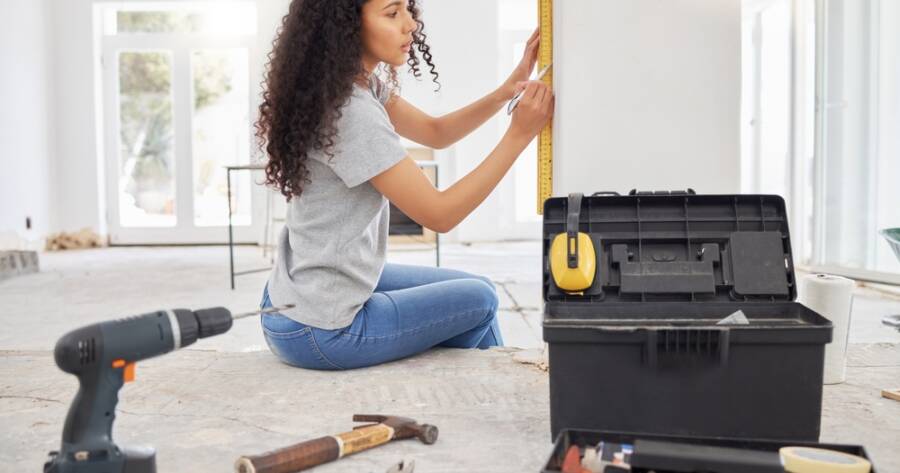Revamping your home doesn’t have to break the bank. With a little creativity and some strategic planning, you can tackle DIY home improvement projects that breathe new life into your space without draining your wallet! Whether you’re updating outdated fixtures or adding personal touches through decor, there are countless ways to achieve a fresh look on a budget. The key is knowing where to start and how to make smart choices that maximize your impact while keeping costs low.
Where to Start for Maximum Impact
When working on home improvement projects with a limited budget, it’s essential to prioritize the areas that will make the most significant impact. Start by assessing which parts of your home are most in need of attention, whether it’s a dated kitchen, a drab living room, or a cluttered entryway.
Focus on projects that enhance both the aesthetic and functionality of your space, such as painting walls, replacing old fixtures, or reorganizing high-traffic areas. By tackling these high-impact areas first, you’ll create a noticeable improvement in your home’s overall feel without overspending. Prioritizing also allows you to allocate your budget wisely, ensuring that the most critical updates are addressed while saving less urgent projects for later.
Affordable Upgrades
One of the most cost-effective ways to refresh your home is by making affordable upgrades, such as painting, updating hardware, and improving lighting. A fresh coat of paint can completely transform a room, making it feel brighter, cleaner, and more modern.1 Consider choosing neutral colors that add a sense of space and can easily complement various decor styles.
Further, replacing outdated hardware, like cabinet knobs, drawer pulls, and door handles, is another simple and inexpensive way to update the look of your home. Lighting also plays a crucial role in the ambiance of your space. Swapping out old light fixtures for more modern designs or adding new light sources, such as floor lamps or under-cabinet lighting, can make a dramatic difference.2 These small changes can give your home a fresh, updated look without requiring a large investment.
Repurposing and Upcycling
Repurposing and upcycling are creative ways to save money on home improvements while also adding unique, personalized touches to your space. Instead of buying new furniture or decor, consider transforming what you already have.3
For example, an old wooden pallet can be turned into a rustic coffee table, or an unused ladder can be repurposed as a stylish bookshelf. Upcycling not only reduces waste but also allows you to create one-of-a-kind pieces that reflect your personal style. With a little creativity and some basic tools, you can breathe new life into items that might otherwise be discarded. Whether it’s repainting a vintage chair or turning old jars into chic storage containers, repurposing and upcycling can make your home more functional and stylish while keeping costs low.
Crafting Personalized Home Accents
Adding personalized decor is a great way to make your home feel uniquely yours, and the best part is, it doesn’t have to be expensive. DIY decor projects allow you to infuse your personality into your space while keeping costs down. Consider making your own wall art, such as framed fabric swatches, painted canvases, or photo collages.
You can also create custom throw pillows, blankets, or curtains with fabric that suits your style. For a natural touch, try crafting decor from materials like wood, stone, or plants! Think handmade wooden signs, painted rocks, or DIY planters. Not only do these projects add character to your home, but they also give you the satisfaction of having created something yourself.
Finding Quality Materials at Lower Costs
Finding quality materials at lower costs is key to staying within budget on your DIY home improvement projects. Start by shopping at discount stores, online marketplaces, and thrift shops where you can find materials like paint, tools, and decor at a fraction of the cost. Keep an eye out for sales at home improvement stores and take advantage of seasonal discounts or clearance sections.
Another smart strategy is to buy materials in bulk or look for reclaimed or gently used items that can be repurposed. Websites and apps like Craigslist or Facebook Marketplace are great for finding second-hand materials and tools at reduced prices. Being resourceful and patient in your shopping approach will help you get the best deals!
Energy-Efficient Improvements That Are Worth Your While
Investing in energy-efficient improvements is a smart way to reduce your utility bills and increase your home’s value over time. Simple upgrades, such as installing LED light bulbs, adding weatherstripping to doors and windows, or upgrading to a smart thermostat, can lead to significant savings on your energy costs.4
You can also consider replacing old appliances with energy-efficient models, which use less electricity and water, helping you save money month after month. Installing low-flow showerheads and faucets is another cost-effective way to reduce water usage. These improvements may require some upfront investment, but they pay off in the long run by lowering your energy bills and reducing your environmental impact.
Learn More About Home Improvement Ideas
DIY home improvement on a budget is all about making smart choices and focusing on projects that deliver the most value. By continuing to explore new ideas and techniques, you can find even more ways to enhance your space without overspending. Whether it’s repurposing old items or making energy-efficient upgrades, there are countless opportunities to improve your home. Keep researching and discovering creative solutions that fit your style and budget, and turn your house into the home of your dreams!
